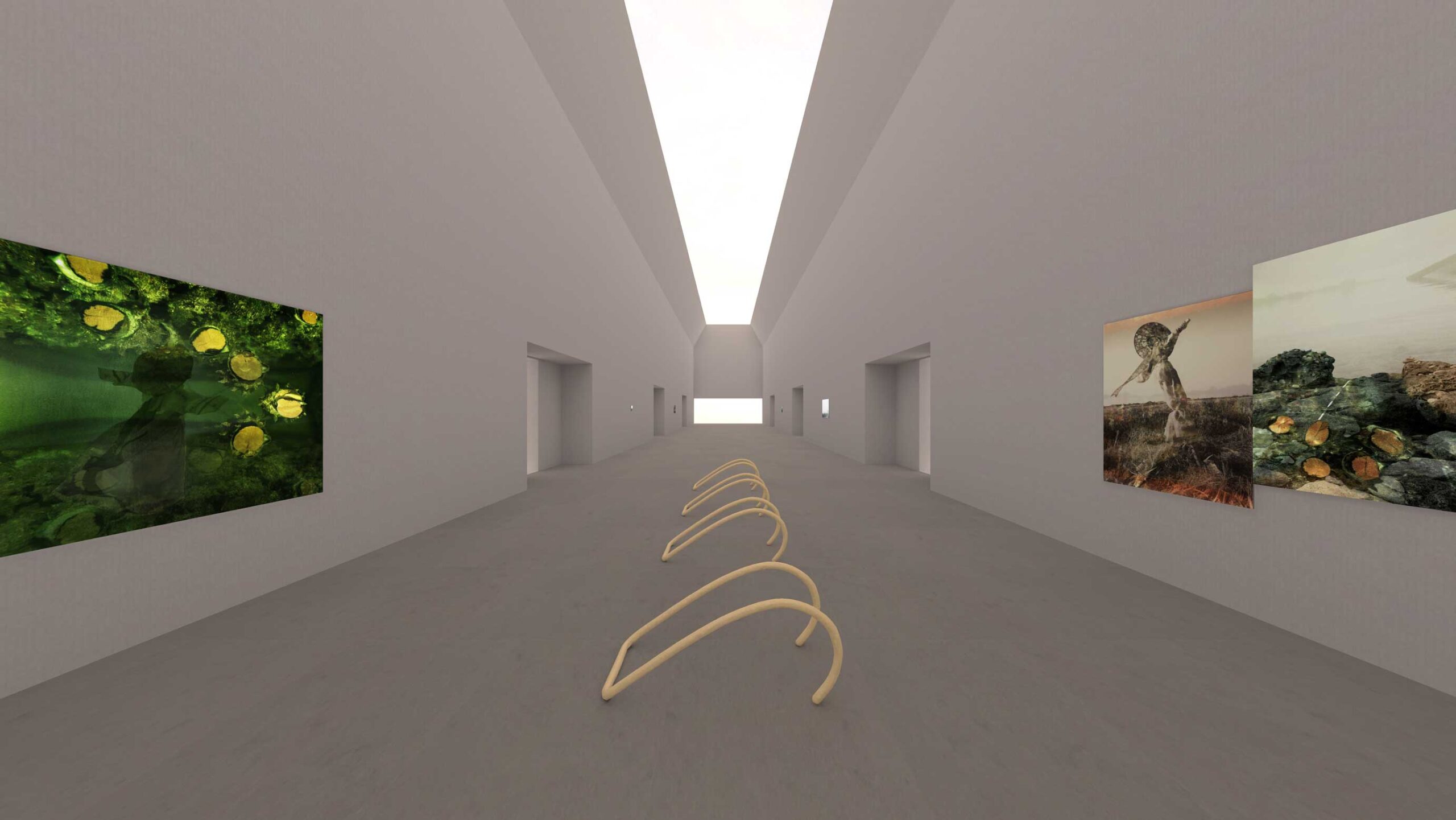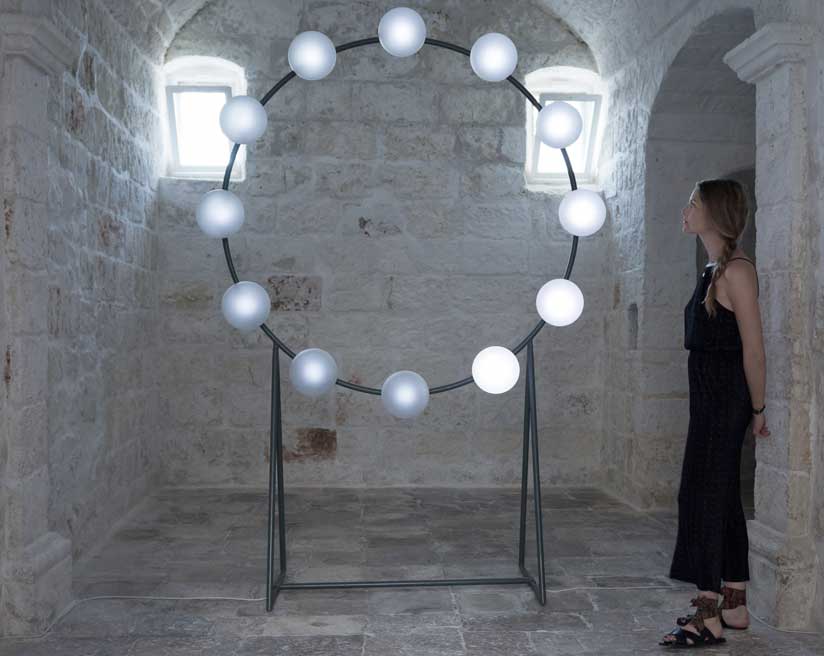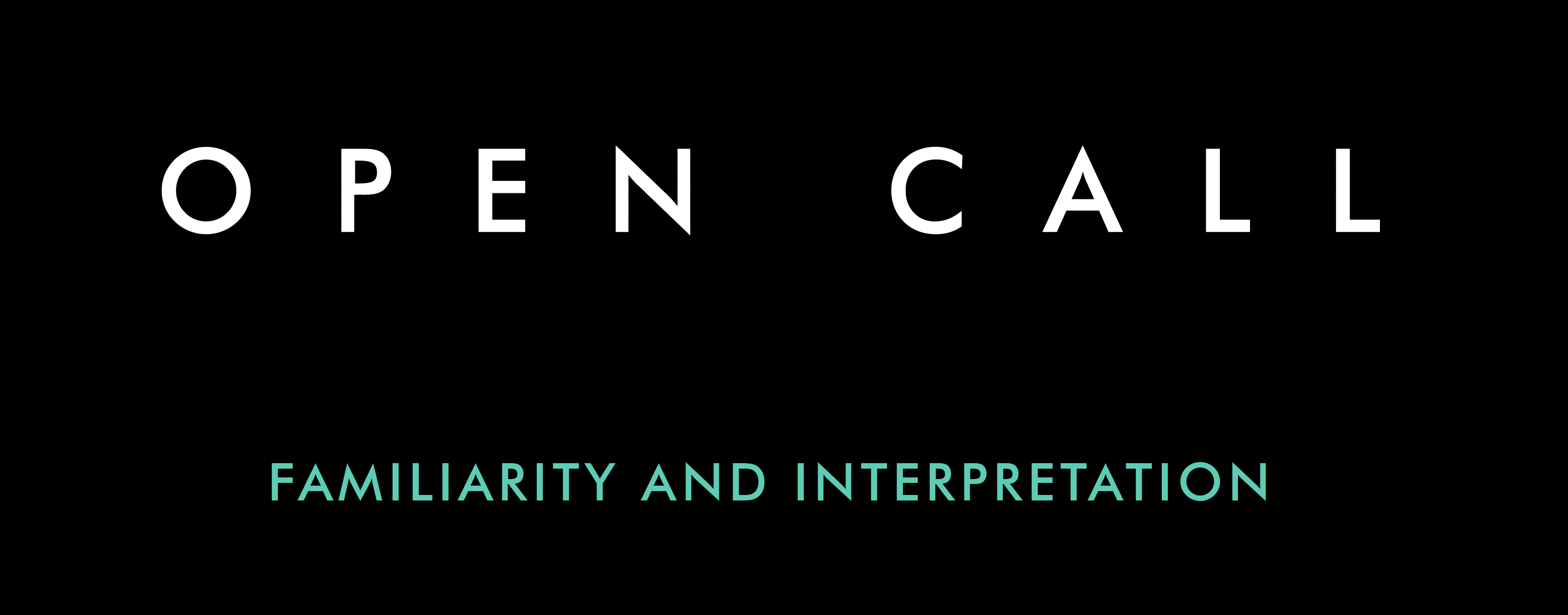“Art is a constant outlet for expression. It always comes as a second nature, a language beyond words.” – Adeline de Monseignat
Adeline de Monseignat is a Dutch visual artist currently based in London and New Mexico. Adeline’s work takes shapes and forms of the uncanny object that question the reality of our actions and thought. Monseignat engages with the familiar to obtain the unfamiliar to slap the desired effect on the viewer. The most fascinating thing about her art is that it brings a sense of familiar calm to one’s mind and yet unsettles it abundantly. Her work is inspired by the co-existence of organic and synthetic materials and explores the themes around “nature, birth, the human body and anthropomorphism through the studies of mythology, anthropology and the uncanny”. Her work creates a dialogue between contrasting materials like marble, fur, soil, and leaves with steel, glass, electricity, and digital media. The choice of material and combination of the natural and synthetic is dictated by the requirements of artwork.
She says, “I often work with mind-maps, linking the main keywords and ideas I want to develop, which often leads me to make an informed choice for the most appropriate material to translate that concept into the physical world.” Monseignat uses recurring motifs and symbols of mythological entities like the sphere, the seed, the wheel, and the ladder signifying the cycle of birth, life, and death. She says, “A dialogue between the natural and the man-made needs to happen and be questioned… I don’t have many answers but my work certainly does want to question that relationship.”
‘Handle’ by Adeline on display at Aora Space.
Photos from Adeline’s latest project “In The Flesh”
Monseignat’s artworks are complex at first, slowly consuming one’s eye and later rather a heartwarming simple. Her ideas are translated into an artwork shaped from the most mundane materials around us, giving it a meaning that can only unfold through meditation and introspection of one’s own mind. The visual stimulus of her sculptures induces a desire to touch the unfamiliar and generates a curiosity that is unbound. Her most important creations include The Uncanny, O, In the Flesh I, II, Hairy Eye Ball I, II, Home, and more. Her recent artwork installation called Handle, recently showcased by AORA III at their virtual gallery, came about during the restrictive life of Covid-19 pandemic and explores the everyday human need to touch and ‘handle’ things. The sculptural installation is made from “handrail tubing manufactured for public transport across the UK… and limbs of Handle are made of steel skeletons wrapped in velvet skin”. The idea essentially explores the desire of touch in human beings and the necessity of restoration of tactile normalcy after the many “do-not-touch restrictions”. The idea spreads wider on a psychological plate, toying with the possibility of change that tactile deprivation might bring about in human psychosis.
Monseignat takes her art a step further and mobilizes a voice for environment preservation as she explores the idea of “man’s participation in their own extinction”. She actively channels the issue of sustainability and environmental crisis through her work. In her film In the Flesh, she explores the anthropomorphism of the marble quarry and depicts the human relationship with the now depleting natural environment. She says, “Men excavate nowadays more than 5 million tons of marble yearly, altering our landscapes, making our mountains disappear. Now consider that the way we eat is responsible for today’s global warming and the extinction of thousands of species, it isn’t farfetched to think we are next on the list.” Moseignat’s work confronts a larger crisis through her visual and tactile narrative encompassing everyday human experience and psychosis bringing out the sheer absurdity of being.
Text by Mariyam Fatima.
Image Source Adeline de Monseignat.












